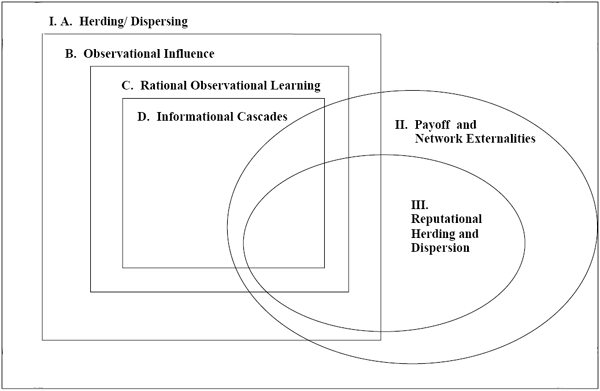Investor herding is convergence of behavior based only on observation of what others are doing (such as buying or selling). Examples in the stock market are trend-following, “don’t fight the tape” and momentum investing. Herding is distinct from investors acting at the same time but independently in response to news related to investment fundamentals (such as the latest jobs report from the Bureau of Labor Statistics or a company earnings release). In their December 2001 paper entitled Herd Behavior and Cascading in Capital Markets: A Review and Synthesis, David Hirshleifer and Siew Hong Teoh provide an overview of financial herding.
They examine convergence and fluctuations in the behaviors of investors, security analysts and firms in capital market decisions. Investors herd (converge in behavior) or cascade (ignore their private information signals) in deciding whether to participate in the market, what securities to trade, and whether to buy or sell. Both analysts and investors herd in deciding what securities to discuss and study. Analysts herd in their earnings forecasts. Firms herd in the timing of new issues, in the adoption of fashionable investment projects and in their decisions of how to report earnings.
The following figure, taken from the paper, summarizes the major aspects of financial herding as delineated by the authors. They cover each aspect in detail in the paper.

In summary, investor and analyst herding and cascading help explain some observed stock market price phenomena.